Special Report
States Where Visitors Don’t Have to Quarantine If They Get Tested for COVID-19
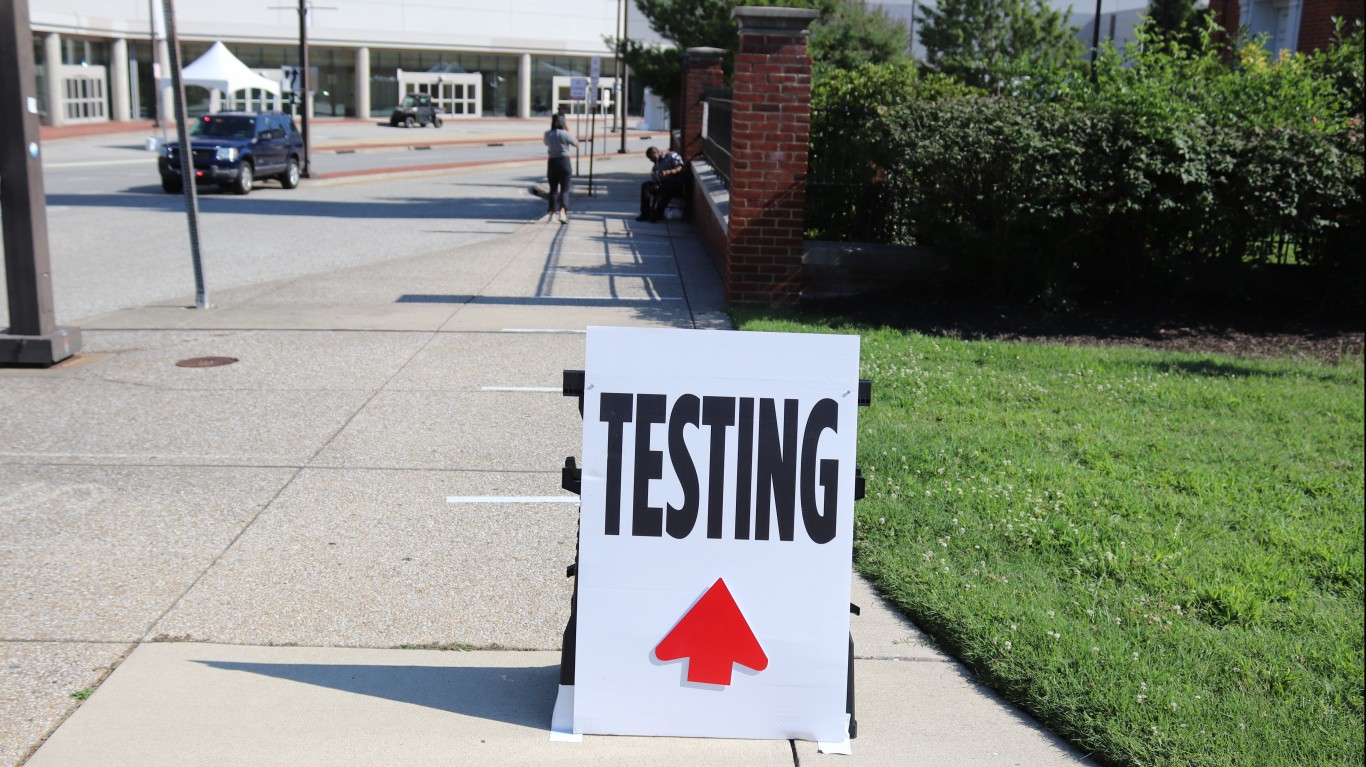
Published:

The federal government has been requiring that all international visitors show proof of a negative COVID-19 test taken no more than three days before flying into the U.S. Many individual states are urging potential visitors as well as residents to avoid nonessential travel. While some states have no statewide travel restrictions of any kind, others allow unrestricted travel if a negative COVID-19 test is presented upon arrival.
24/7 Tempo reviewed executive orders from state governors and travel advisories to find and list which states offer a testing option to avoid either part or the entire self-isolation period.
At least a dozen states and the District of Columbia have an option to show a negative COVID-19 test a few days into their stay in the state in order to avoid a 10 or 14 days quarantine period.
At least one state, New Hampshire, has lifted any quarantine requirements for those who are fully vaccinated against the coronavirus and at least 14 days have passed since their second dose.
Several states have lifted quarantine and testing requirements for travelers who have had COVID-19 within the last three months and have proof of recovery.
Hawaii is one state that changes its travel restrictions on an almost monthly basis, depending on how the virus is spreading in the rest of the country. As of February, the Aloha State required that all visitors get tested before arrival at specific locations approved by the state. Still, visitors to Kauai must quarantine regardless of test results for at least three days. For a list of all travel restrictions due to COVID-19 in each state, click here.
Click here to see the states where visitors don’t have to quarantine if they get tested for COVID-19

1. Alaska
All visitors who are over the age of 10 must upload to an online travel portal proof of a negative molecular-based COVID-19 test taken 72 hours prior to arriving in Alaska. Visitors are also required to submit a travel declaration and self-isolation plan.
Visitors who get tested before departure for Alaska and who are still waiting for their results must quarantine until proof of a negative finding can be submitted. Visitors arriving without a test can get one for $250 and must self-quarantine while awaiting results, which may take three days or more. Alaska recommends that all visitors take a second test five to 14 days after arrival.
Nonresidents who tested positive for the COVID-19 in the previous three months and have documentation they have recovered, don’t have to get tested.
Residents have two options — get tested or quarantine for two weeks.
[in-text-ad]
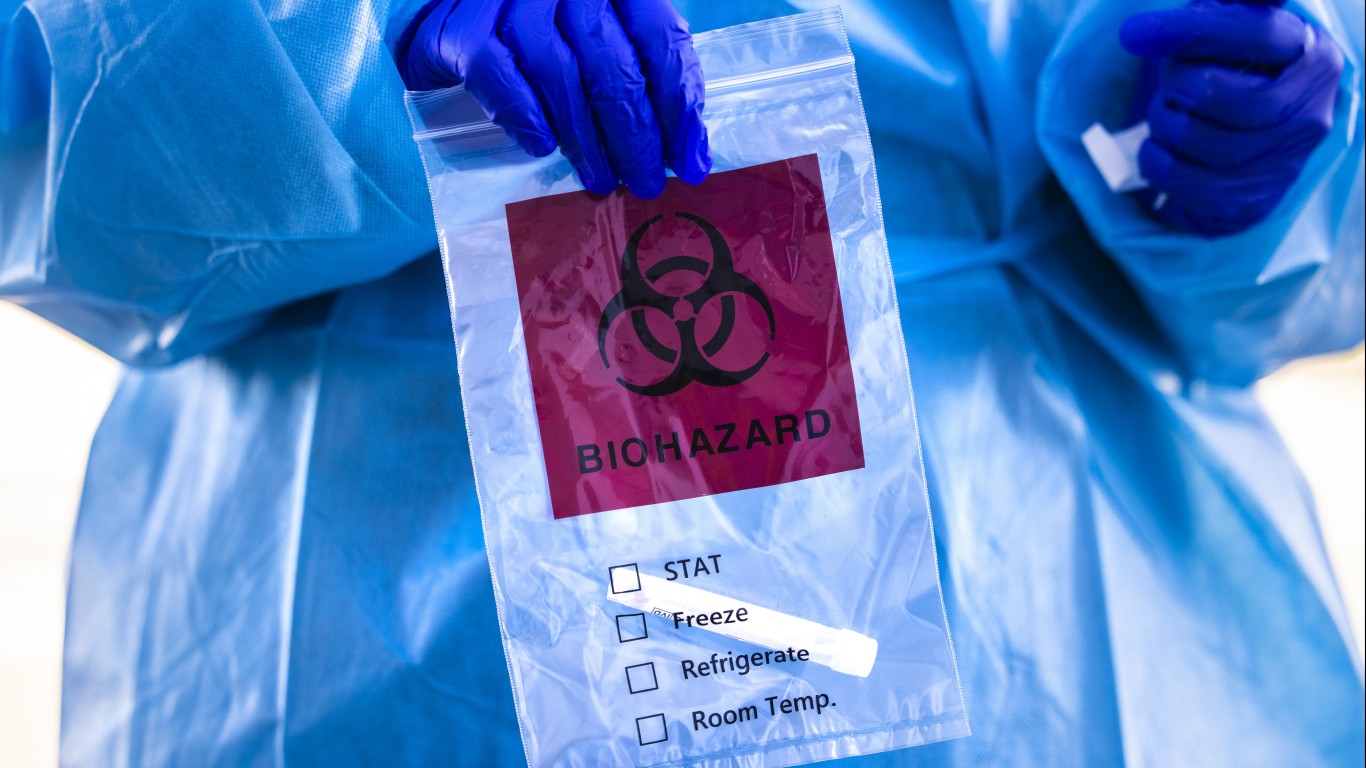
2. Colorado
Colorado does not have a statewide test mandate for incoming travelers, but Pitkin County, which includes the popular ski destination of Aspen, does. All visitors who are older than 10 and who are staying at least one night in the county must show a negative COVID-19 test taken no more than three days before arrival.

3. Connecticut
Nonresidents coming to Connecticut are required to self-quarantine for 10 days unless they are residents of New Jersey, New York, or Rhode Island. A health form must also be submitted.
Travelers can avoid or shorten how long they are in quarantine by showing a negative COVID-19 test taken within 72 hours of arrival in Connecticut. A test can be taken after arriving, but visitors must quarantine until proof of the negative result is emailed or faxed to the Commissioner of Public Health.
Visitors who recovered from the virus within 90 days of going to Connecticut are not required to quarantine if proof of their positive test is submitted.
Failure to comply may result in a fine of up to $500 per violation.
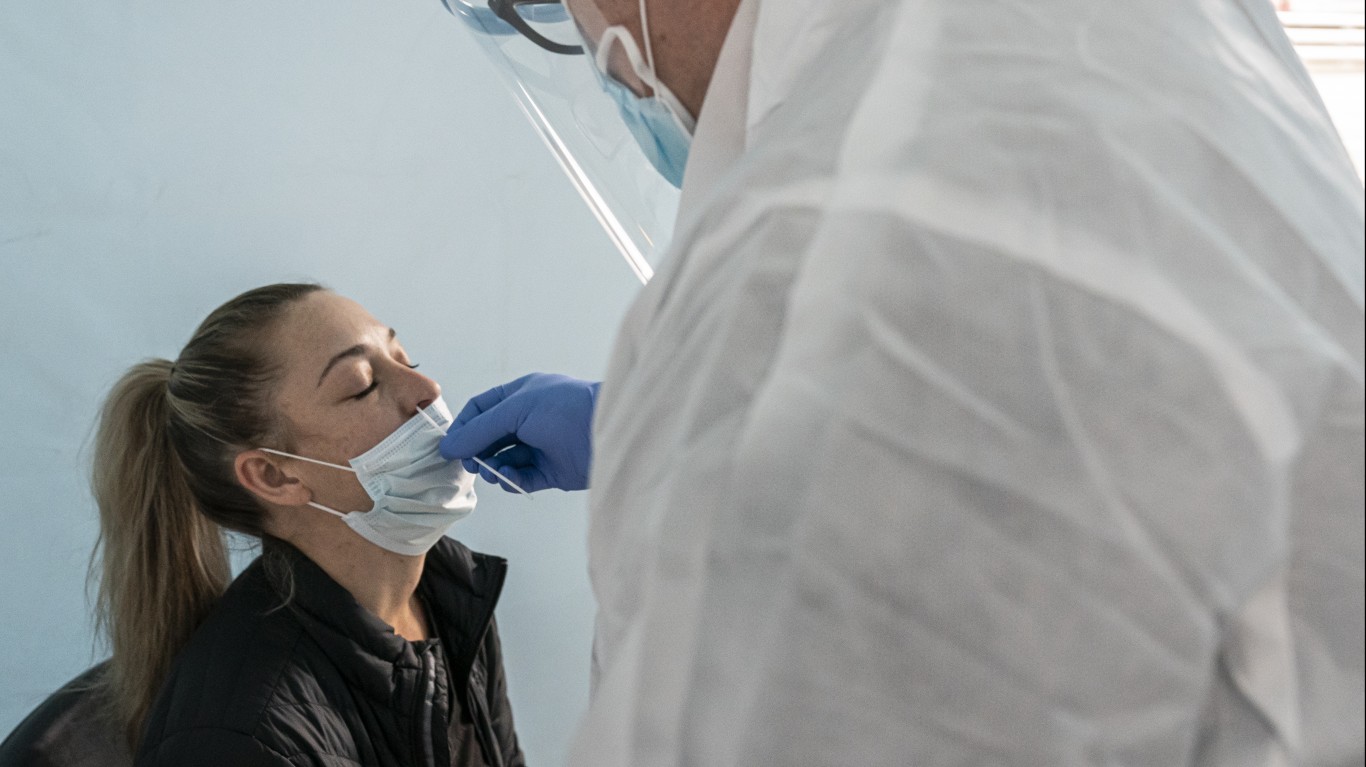
5. Hawaii
Travelers are able to avoid the mandatory 10-day quarantine on the islands of Hawaii, Oahu, and Maui if they present a negative nucleic acid amplification test (NNAT) result from an approved testing site. The test must be taken within 72 hours of the final leg of the trip.
Visitors who are 5 years and older and whose test results are pending must quarantine. Then, the results must be uploaded online into a mandatory health form. Travelers also have the option of bringing a hard copy when boarding their flight.
The island of Kauai requires a 10-day quarantine for any out-of-state visitors regardless of pre-trip test result. The quarantine period, however, can be shortened if the visitors are staying in “resort bubble” hotels. Those are hotels that allow guests to leave their rooms and enjoy certain services, but the guests have to get tested for COVID-19 at least 72 hours after their stay begins. If the test is negative, the guests are no longer required to quarantine in the resort.
Some trans-Pacific passengers may be required to get a second COVID-19 test, depending on which county in Hawaii they are traveling to. The county of Hawaii is randomly testing up to 25% arriving passengers at the airport. Maui and Kauai counties are requesting a second test 72 hours after arrival. The second test is free.
[in-text-ad-2]
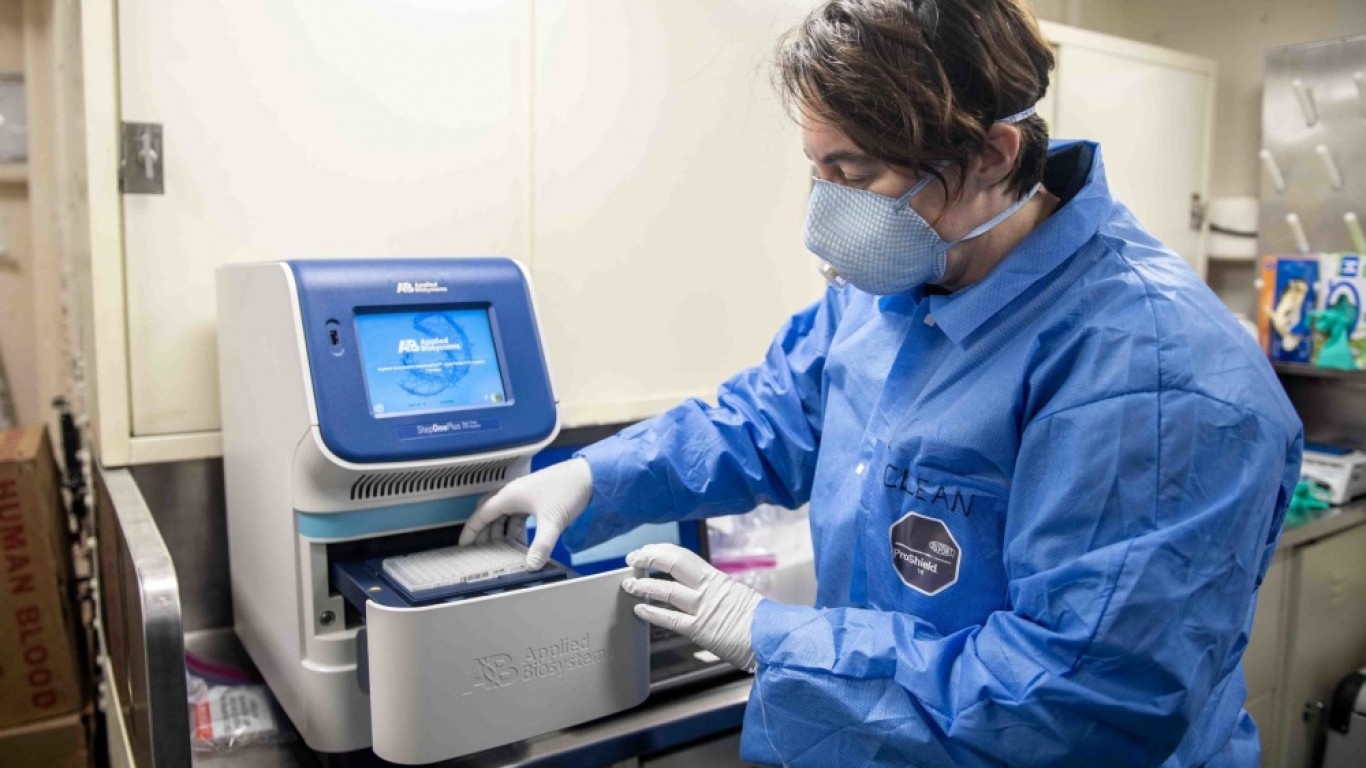
6. Illinois
Illinois has no statewide travel restrictions, but Chicago does. The city has implemented a two-tier color-coded travel system. Visitors arriving from “yellow” areas are not required to quarantine or show a negative COVID-19 test result. Visitors from “orange” states and territories — which as of Feb. 16 are all but Alaska, Hawaii, North Dakota, and Puerto Rico — must quarantine for 10 days or show a negative result from a COVID-19 test taken within three days before arrival in Chicago.
7. Kansas
Residents and out-of-state visitors are required to quarantine upon arrival if they have been participating in any gatherings of more than 500 people where individuals did not wear masks or were not keeping a physical distance of at least 6 feet. All cruise passengers are also required to self-isolate.
The quarantine period may be shortened if asymptomatic individuals take a PCR test on the sixth day of isolation. If the test comes back negative, quarantine is over on the eighth day.
Asymptomatic people in quarantine who choose not to get tested may be released from isolation on day 11.
[in-text-ad]
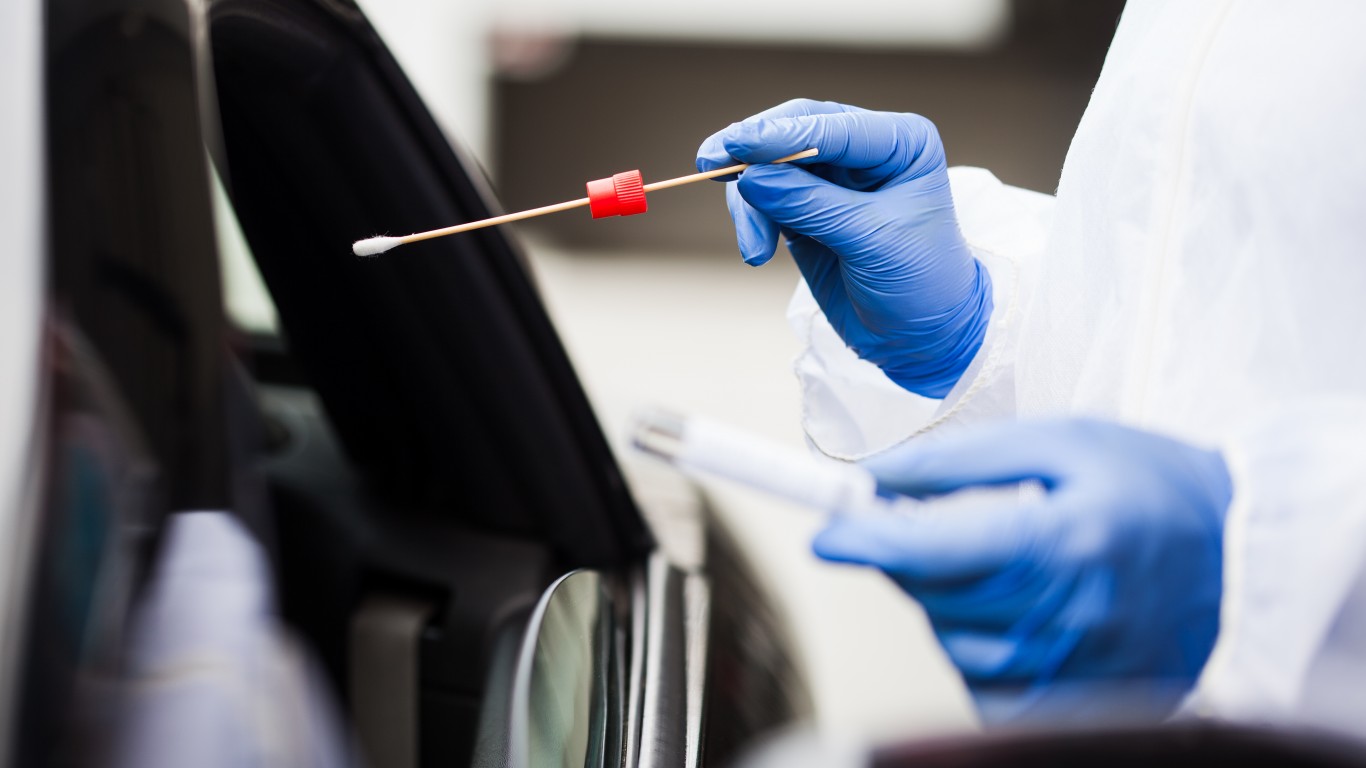
8. Maine
Unless they are from New Hampshire or Vermont, all visitors have to quarantine for 10 days or the duration of their trip, whichever is shorter. Visitors can avoid self-isolation if they sign a document stating they had a negative PCR test result or antigen coronavirus test in the 72 hours prior to arriving.
Visitors whose test results are not ready yet are required to quarantine until a negative result is received.
The restrictions apply to residents who go on a day trip to a non-exempt state as well. Maine residents who visit New Hampshire or Vermont are not required to get tested or quarantine upon returning.
9. Maryland
Visitors to Maryland are strongly advised to obtain a negative coronavirus test either 72 hours before arriving or immediately upon arrival.
Any Maryland resident traveling to a state with a 10% of higher positivity rate — which as of Feb. 16 are Texas, Oklahoma, Kentucky, Virginia, South Carolina, and New Hampshire, according to the CDC — should get tested or quarantined.
Visitors arriving from Delaware, Pennsylvania, Virginia, West Virginia and Washington D.C. — areas very close to Maryland — are exempt.
Failure to comply with the order may result in a $5,000 fine.

10. Massachusetts
Unless they are commuting, just passing through Massachusetts, or are from a state with a low coronavirus transmission rate, travelers over the age of 10 are required to quarantine for 10 days or show a negative PCR test taken within 72 hours prior to arrival. Those awaiting test results must quarantine. Everyone over the age of 18 must fill out a travel form.
As of Feb. 16, the states and territories with a low coronavirus transmission rate are Hawaii, North Dakota, and Puerto Rico.
Failure to comply may result in a $500 fine a day.
[in-text-ad-2]

11. New Hampshire
A 10-day quarantine is required for all visitors and residents coming from abroad, a cruise ship, or any state other than the New England states of Maine, Vermont, Massachusetts, Connecticut, and Rhode Island.
Asymptomatic travelers can get a PCR test starting on the seventh day of isolation, and if it’s negative, they are free to leave quarantine.
Travelers have the option to quarantine for 10 days in their home state before arriving in New Hampshire.

12. New Jersey
Visitors and residents returning to New Jersey from any place other than New York, Connecticut, Pennsylvania, and Delaware are asked to get a COVID-19 test one to three days before their trip and then again three to five days after arriving in New Jersey.
Even if the pre-trip test is negative, a seven-day quarantine period is still recommended.
Visitors from outside New York, Connecticut, Pennsylvania, and Delaware are asked to fill out an online survey detailing where they have visited and where they stayed.
People who have recovered from COVID-19 in the past three months are not required to quarantine or get tested, as long as they do not have symptoms.
[in-text-ad]

13. New York
Visitors to New York may avoid the full mandatory 10-day quarantine with a series of tests. Travelers who show a negative COVID-19 test taken no more than 72 hours before arrival must also quarantine for three days after arriving. On the fourth day, they then have to take another COVID-19 test, and if it is negative, they may leave quarantine. Those not wanting to take the tests must complete the full quarantine.
Visitors from states that are contiguous with New York are exempted from the quarantine protocol. People who have been out of New York for less than 24 hours do not need to get a test or quarantine but they have to get tested on their fourth day in the state.
All visitors must fill out a Health Department traveler form.
A failure to comply with these rules may result in a fine of up to $10,000.

14. Pennsylvania
Anyone entering Pennsylvania must show proof of a negative coronavirus test taken in the 72 hours before arriving. Otherwise, they must quarantine for 10 days or until a negative test result can be shown. A failure to comply with the order may result in a fine between $25 and $300.
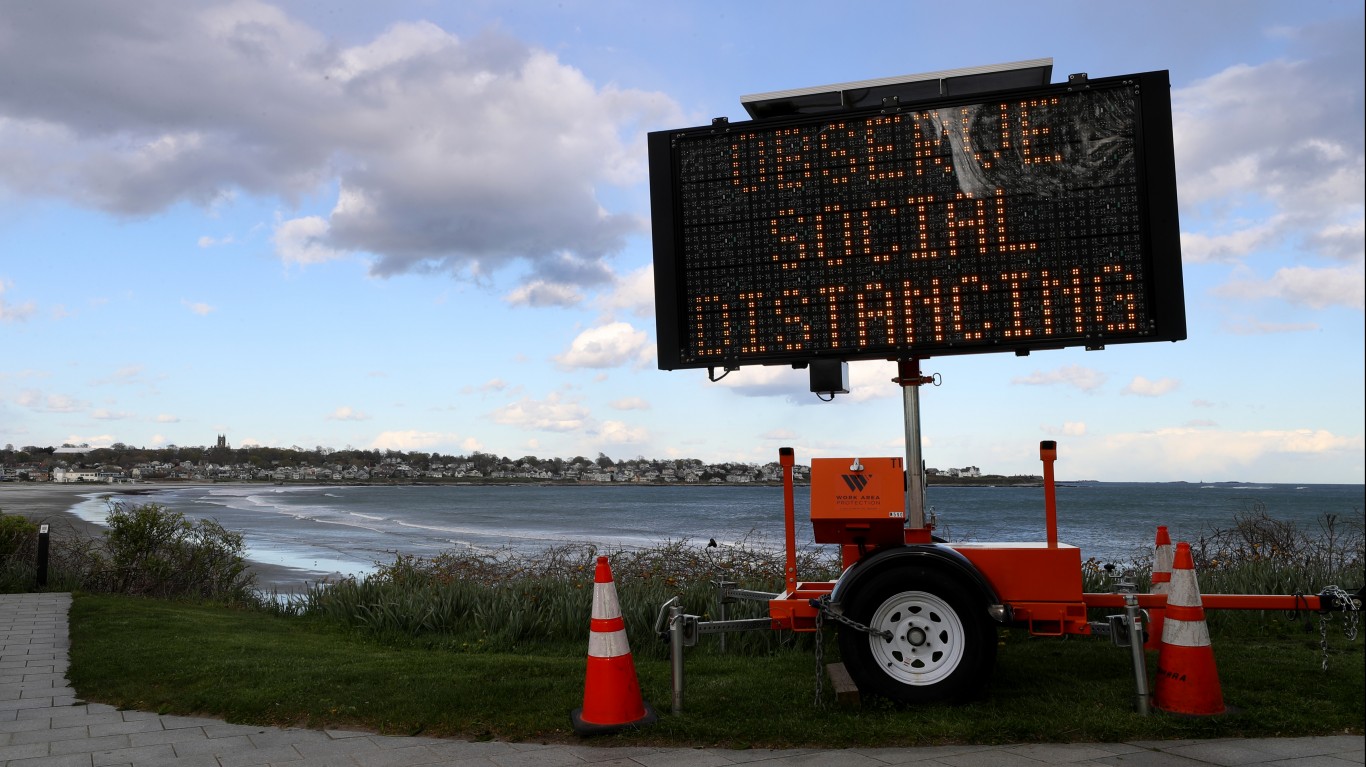
15. Rhode Island
Anyone visiting from an international destination is required to quarantine for 10 days or provide proof of a negative result from a test taken within 72 hours before arrival. Those who test negative at least five days into their quarantine can stop self-isolating on the seventh day.
Anyone visiting from a higher-risk state also must quarantine for 10 days or until they show a negative result from a COVID-19 test. Visitors must also complete a certificate of compliance.
The states identified on Feb. 16 as high risk are Alabama, Arizona, Arkansas, Florida, Georgia, Idaho, Iowa, Kansas, Kentucky, Mississippi, Missouri, Nevada, New Jersey, North Carolina, Ohio, Oklahoma, Pennsylvania, South Carolina, South Dakota, Tennessee, Texas, Utah, and Virginia.
[in-text-ad-2]

16. Vermont
All visitors to Vermont, and returning residents, must quarantine for 14 days. Asymptomatic travelers may get a PCR test on the seventh day of their quarantine. If the result is negative, they are free to leave quarantine.
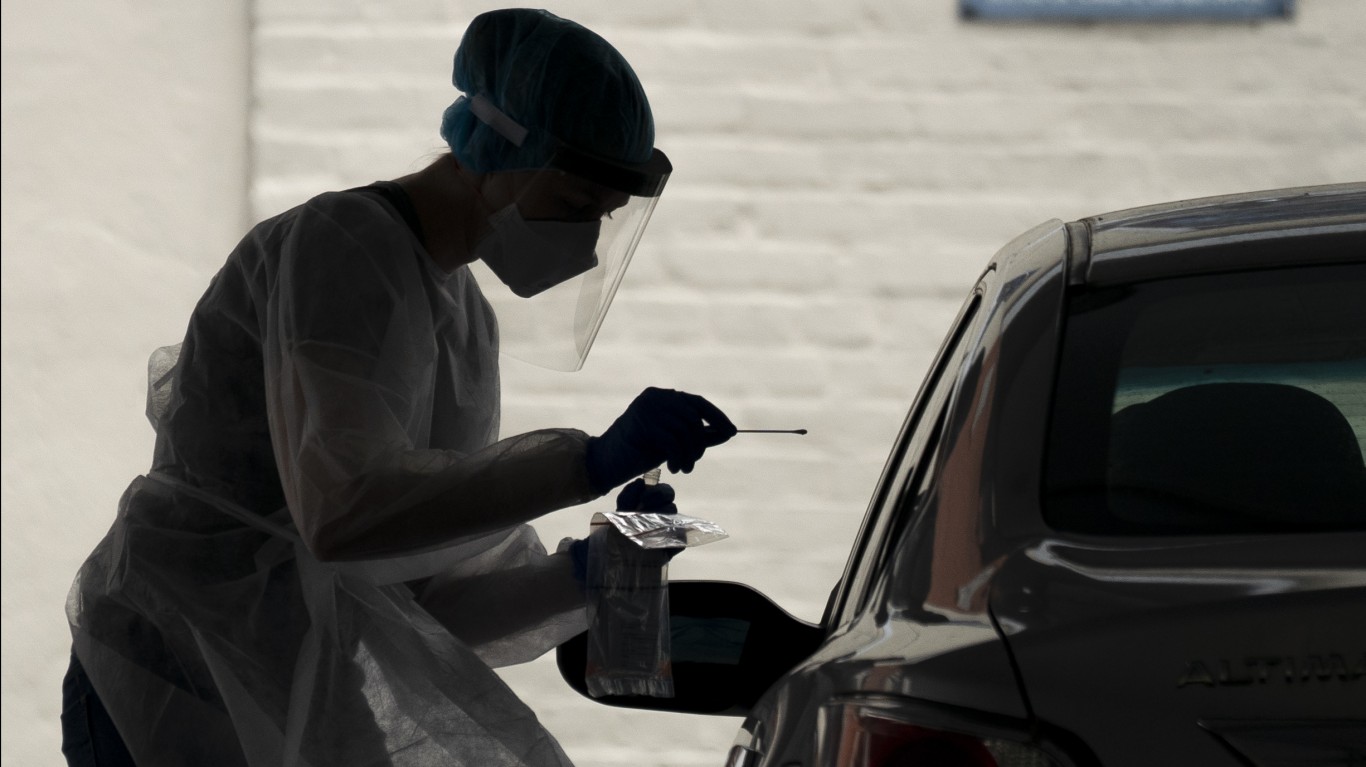
17. District of Columbia
Visitors who are staying overnight in the District of Columbia and who are coming from a high-risk state or territory must show a negative COVID-19 test taken no more than 72 hours before arriving. If they are staying in D.C. for more than three days, they must get another test three to five days after arriving.
Residents of Maryland and Virginia are exempt from these rules.
The average American spends $17,274 on debit cards a year, and it’s a HUGE mistake. First, debit cards don’t have the same fraud protections as credit cards. Once your money is gone, it’s gone. But more importantly you can actually get something back from this spending every time you swipe.
Issuers are handing out wild bonuses right now. With some you can earn up to 5% back on every purchase. That’s like getting a 5% discount on everything you buy!
Our top pick is kind of hard to imagine. Not only does it pay up to 5% back, it also includes a $200 cash back reward in the first six months, a 0% intro APR, and…. $0 annual fee. It’s quite literally free money for any one that uses a card regularly. Click here to learn more!
Flywheel Publishing has partnered with CardRatings to provide coverage of credit card products. Flywheel Publishing and CardRatings may receive a commission from card issuers.
Thank you for reading! Have some feedback for us?
Contact the 24/7 Wall St. editorial team.